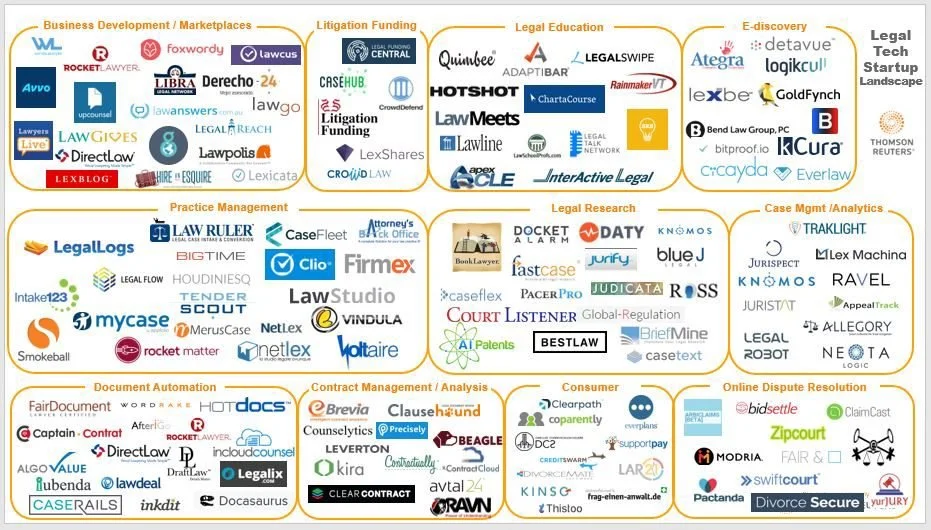Litigation Management - Series 1
What is Litigation Management Software?
The Definition. There are a lot of sales and marketing efforts taking place using the title “Litigation Management Software.” And there is very little Litigation Management Software available. It is an excellent exercise to define litigation management software to base our communications and decision-making on a clear shared understanding.
Image courtesy of Thomson Reuters
What it is. A tech product where the process of managing a litigated claim and the delivery of the related legal services takes place. It drives and facilitates–identifying a resolution strategy, identifying the tasks needed to implement that strategy, creating a budget aligned with completing the strategy and tasks, creating a detailed transparent case valuation, and communication among the stakeholders. Ideally, it also captures detailed data insights while doing the above. It operates to make the litigation process more effective and efficient. It leads to reduced legal and indemnity spending and case life.
What it isn’t. After the fact bill review or a place to only capture or store information while not driving the litigation processes and outcomes.
What is Litigation Management Software?– For Adjusters. A common criticism of adjusters is that they “assign and resign.” The adjuster does not actively manage the litigation assigned to them. As a result, they bring less value, and the attorneys are left to run amuck and incur unnecessary expenses and overpay on indemnity. Do adjusters want to be actively involved in their cases? We think so. There are two reasons “assign and resign” occurs. One is attorneys who refuse to “allow” the adjuster to be an active participant in the litigation process. Why this happens is a topic for another day. The other reason is claims and information overload.
The adjuster simply cannot be an active participant in light of the volume of information coming to them–they can only react to the request of the moment. Actual litigation management software organizes and standardizes the information the adjusters receive on their cases. It streamlines their workload and enables them to have time to think and be proactive.
What is Litigation Management Software?–For Attorneys. The tech an attorney needs to manage litigation is not that different from what an adjuster needs to oversee a claim. The tech needs to organize and standardize how attorneys deliver and create information regarding the claim. It also needs to facilitate the legal teams’ communication. There is no litigation management software for law firms that achieves these goals. (You know the punch line–other than ClaimDeck) As a result, law firms cannot deliver consistent quality services. This inability leaves clients with the dilemma of “we hire the attorney and not the law firm.” The client cannot rely on the law firm to deliver uniform services of a standard quality across the law firm.
The client has to try and find individual attorneys within the firm who can deliver consistently in alignment with their expectations. The attorneys spend tremendous resources building individual adjuster relationships, and carriers spend excessive time managing panel counsel and individual attorney relationships. The lack of a tech-enabled process for law firms to deliver consistent results on litigated matters causes an inefficient marketplace.
The Benefits of a joint working site. A tech-enabled joint working site addresses the challenges faced by the adjuster and the attorney of working effectively together on litigated matters. For example, “assign and resign” and “we hire the attorney and not the law firm” can be reduced. By communicating in a consistent and easy-to-digest format, both sides can efficiently manage the stream of communications generated by claims. The facilitated communications should focus on resolution strategy, tactics to achieve that strategy, the applicable budget, and the claim's value. With improved communication comes better decision-making, resulting in a reduction in legal and indemnity spending.



